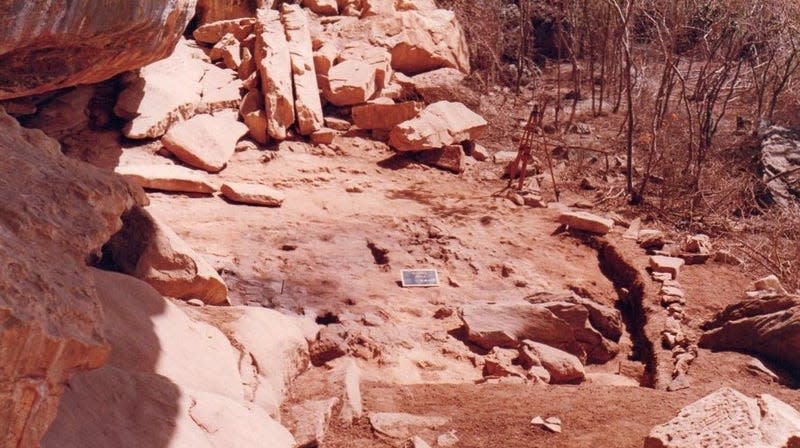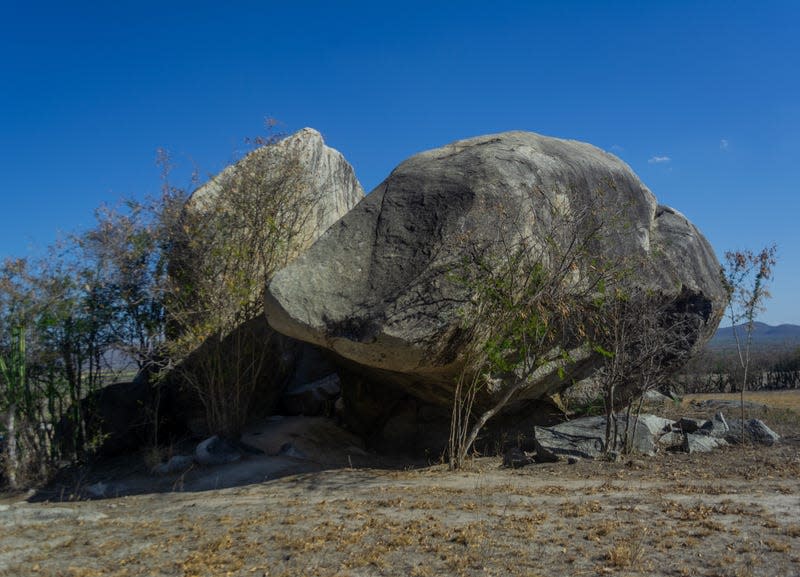Neanderthal and Denisovan DNA Discovered in Ancient South Americans

The Alcobaça site in Brazil, where skeletal remains were discovered.
Scientists investigating the genomes of ancient South Americans have made a surprising discovery: the presence of DNA from Neanderthals and Denisovans, two species of humans that are now extinct. The findings complicate our understanding of ancient South Americans and their ancestries.
The research, which interrogated human remains from Brazil, Panama, and Uruguay, also revealed migration patterns of these early South Americans across the continent. It’s the first time that Denisovan or Neanderthal ancestries have been reported in ancient South Americans. The research is published this week in the Proceedings of the Royal Society B.
Read more
“The presence of these ancestries in ancient Native American genomes can be explained by episodes of interbreeding between anatomically modern humans and Neanderthals and Denisovans, which should have occurred millennia before the first human groups entered the Americas through Beringia,” said Andre Luiz Campelo dos Santos, an archaeologist at Florida Atlantic University and the study’s lead author, in an email to Gizmodo.
The research affirmed archaeological evidence of north-to-south migration toward South America, but also indicated migrations occurred in the opposite direction, along the Atlantic coast.
In the recent work, the team compared genomes from ancient human remains found in Brazil, Panama, and Uruguay with ancient remains from across the United States (including Alaska, to represent ancient Beringia), Peru, and Chile. Two ancient whole genomes from teeth found in northeast Brazil that were included in the study were newly sequenced.
In addition to the ancient human genomes featured in the analysis, the team looked at present-day worldwide genomes and DNA sequences taken from Denisovan and Neanderthal remains from Russia.
The latter remains are over tens of thousands of years old (Neanderthals disappear from the fossil record around 40,000 years ago), but some of the human remains are just 1,000 years old, according to the team’s analysis.

The Pedra do Tubarāo site in northeast Brazil.
Perhaps most intriguingly, the analysis revealed chunks of Neanderthal and Denisovan DNA in the ancient South American genomes, as well as Australasian signals in the remains of one individual from Panama. The Australasian signal was previously detected in ancient remains in southeastern Brazil and is present today in the Sirui people of Amazonia.
“The extra amount of Denisovan ancestry in some populations does seem to fit with extra ancestry from Papuans, so in that sense the data is consistent,” said Laurits Skov, a researcher at the Max Planck Institute for Evolutionary Anthropology who was not affiliated with the recent study, in an email to Gizmodo.
“In the future, it will be very interesting if we could figure out exactly when this Australasian ancestry component appears in the Americas and how much Denisovan/Neanderthal it brings with it,” Skov added.
The ancient individuals in Panama and Brazil had more Denisovan ancestral signals in their genomes than they did Neanderthal-specific ancestry. Today, the opposite is the case in humans around the world: We have more Neanderthal in us than Denisovan.
According to study co-author John Lindo, an anthropologist at Emory University, the Denisovan ancestry was mixed into the South American humans as long as 40,000 years ago, and its signal persisted in the remains of a 1,500-year-old individual from Uruguay.
Santos said there was no evidence of the Australasian signal in ancient North American remains, which suggests ancient Australasians may have gotten to the Americas without crossing Beringia. To that end, the team hopes to examine more ancient Native American and present-day Polynesian genomes in future studies.
“The Australasian ancestry in the Americas is perplexing, as this has been reported for isolated samples widely separated by space and time and doesn’t show a clear pattern,” said Iosif Lazaridis, a geneticist at Harvard University who was not affiliated with the work, in an email to Gizmodo.
“Such ancestry may have spread with Austronesian migrations across the Pacific (a non-Beringian route), as Austronesians were able seafarers,” Lazaridis added, noting that, despite the possibility, there is no evidence Austronesians made it to the Americas.
Increasingly, the story we know of human existence becomes colored with the genetics of long-lost hominin species. As more ancient genomes are sequenced, scientists can develop a more complete portrait of how humankind dispersed across the continents, and how much of what makes us human is actually not from Homo sapiens at all.
More: Sweeping Genetic Study of Ancient Eurasians Reveals Thousands of Years of History
More from Gizmodo
The Best Shortcuts On Mac: Snap Windows, Text to Speech, and More
How to Delete Your Twitter Account If Elon Musk Was Your Last Straw
Sign up for Gizmodo's Newsletter. For the latest news, Facebook, Twitter and Instagram.
